FORT SILL, Okla.--The tens of thousands of new Soldiers who go through Fort Sill every year get small arms instruction as part of their Initial Entry Training. This training includes firing M-16 rifles, which eventually wear out and break through normal training use.
When the thousands of small arms used by Training and Doctrine Command here need to be repaired, the Fort Sill Army Materiel Command calls in the expertise of the Army Small Arms Readiness Evaluation Teams - Repair from the Tank-Automotive and Armaments Command at Rock Island Arsenal, Ill.
Almost 90 members of the SARET-R have been repairing weapons since Nov. 30, at the fleet management center here. On a good day, the team will repair more than 1,100 weapons. By the time the SARET finishes Friday, they will have repaired about 14,500 small arms.
This includes M-16 and M-4 rifles; crew-served weapons, or guns which require more than one-person to fire, such as .50 caliber, M-240, M-249 and M-2 machine guns; grenade launchers; as well as optics, such as binoculars.
"In the training mission, Soldiers are using weapons all the time and the way we cycle weapons. I thought it was critical that we bring somebody in to give us some additional help," said Robert Griffin, TACOM support officer at the AMC.
The readiness of the weapons had gotten extremely low and the SARET visit ensured the weapons were repaired in an expeditious manner.
Soldiers from the field artillery and air defense artillery units at Fort Sill delivered weapons daily to a motorpool that was turned into a huge gunsmith operation.
Accountability of weapons was paramount, and Soldiers remained on site until their weapons were returned to them.
First, the weapons were brought in, counted and logged. Then technicians gave each weapon a thorough inspection checking for tolerances, and broken and worn parts.
They documented every repair the weapon needed, said David Villar, a SARET leader.
The weapon then went to a repair section where craftsmen fixed it to military specs and tolerances. Technicians documented their work on DA Forms 2404 Equipment Inspection and Maintenance Worksheet, which followed each weapon as it moved through each station.
The techs can repair or replace every part except the lower receiver which contains the weapon's serial number and is an accountable item, said Bernard Arellano, a senior equipment specialist with the SARET. There is also a special repair center, a shop with specialized tools and machine equipment for certain tasks, such as removing the cam from a .50-caliber machine gun, he said.
Similar to an automotive repair shop, the teams refer to service manuals, which provide a quick reference with weapon schematics and national stock numbers for parts.
However, not all weapons are repaired. Those that are too damaged or worn are coded out, or deemed nonrepairable, and are returned to the unit to be disposed of through property book channels so that they can be replaced, Arellano said.
Next, the weapons were given a trigger pull inspection, which checked for tolerances, and then a final inspector verified that all the work that was documented on the 2404 was performed.
The SARET does not fire the repaired weapons as a check, instead it leaves that up to the units, Arellano said.
Technician Donald Packer said the weapons work here was pretty routine. "Same weapons, you see the same conditions of guns no matter where you go," he said.
The most common repairs are replacing worn upper receivers, cracked butt stocks and cracked hand guards, Arellano said.
"That's normal wear and tear of the weapon," he said.
The SARET is made up of a mix of Army civilians, who are from Rock Island and Anniston Army Depot, Ala., and contractors. About three-quarters of its employees are veterans, who had worked in small arms repair in the Army or Marine Corps, Arellano said. Many of them are certified gunsmiths.
The SARET performs repairs at Army posts worldwide, including Iraq and Afghanistan.
While at Fort Sill, another SARET was working in Alaska.
The team's work here was one of its bigger jobs because Fort Sill is a training center, said Ken Hiltunen, an equipment specialist on the team. A normal job lasts about two weeks and about 5,000 weapons are repaired.
The SARET found out about its Fort Sill mission in October and began its supply planning, said Carrina McNeal, inventory management specialist. The team brought between $3 million and $4 million worth of supplies on 40 pallets and had a parts supply section that would put the shelves of a retail auto parts store to shame.
"We have everything from the tiniest little pin to butt stocks, bi-pods, trigger springs, hammers, barrels, everything," McNeal said.
Every day McNeal forecasted what parts would be needed and constantly ordered items from the team's warehouse, which were shipped overnight from Rock Island.
By Dec. 11, about two-thirds of the way through the job, things were going well, said Staff Sgt. Phillip Good, of the 95th Adjutant General Battalion (Reception) and noncommissioned officer in charge of the detail which transported the weapons to the center.
"We want to make sure that all of the basic trainees' weapons are 10-20 that means they are functional, ready to go, 100 percent," Good said.
Griffin said he is anxiously awaiting the benefits of the SARET work here. "There will be better weapons and (weapon) qualifications will be much easier now," he said.
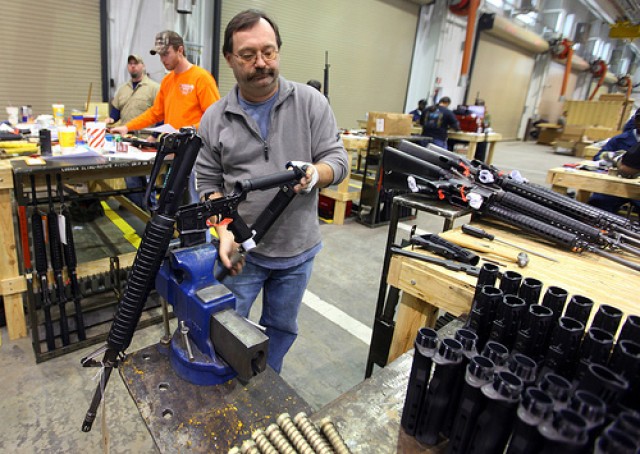
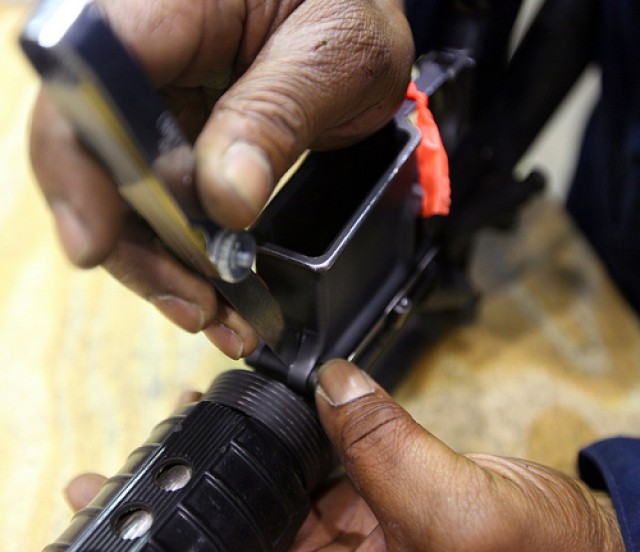

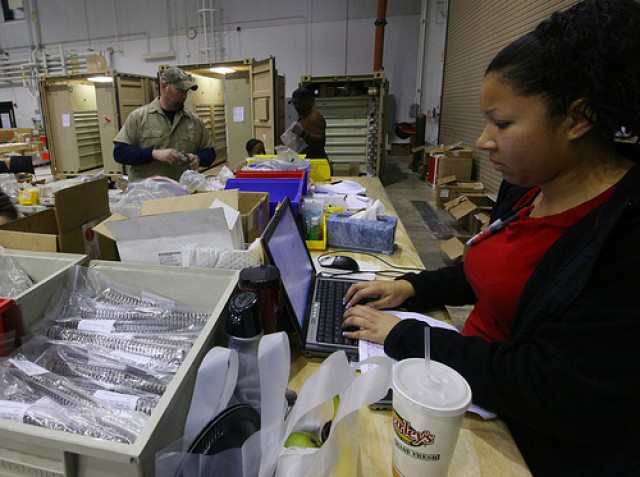
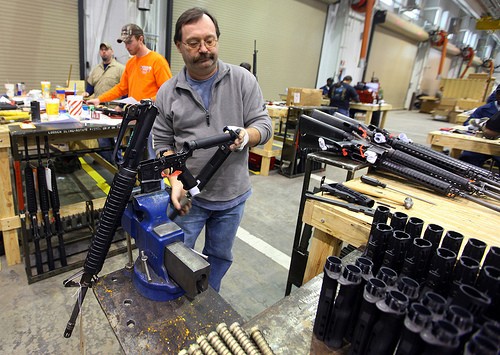

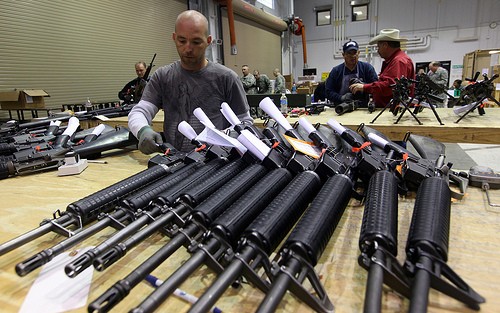
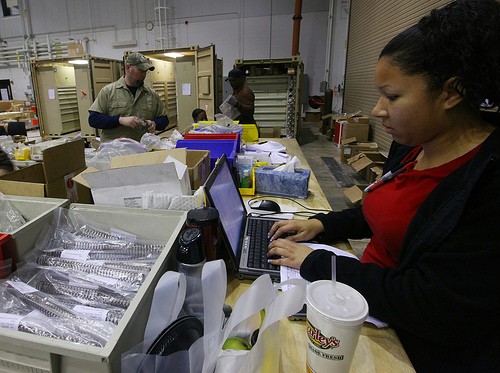
Social Sharing